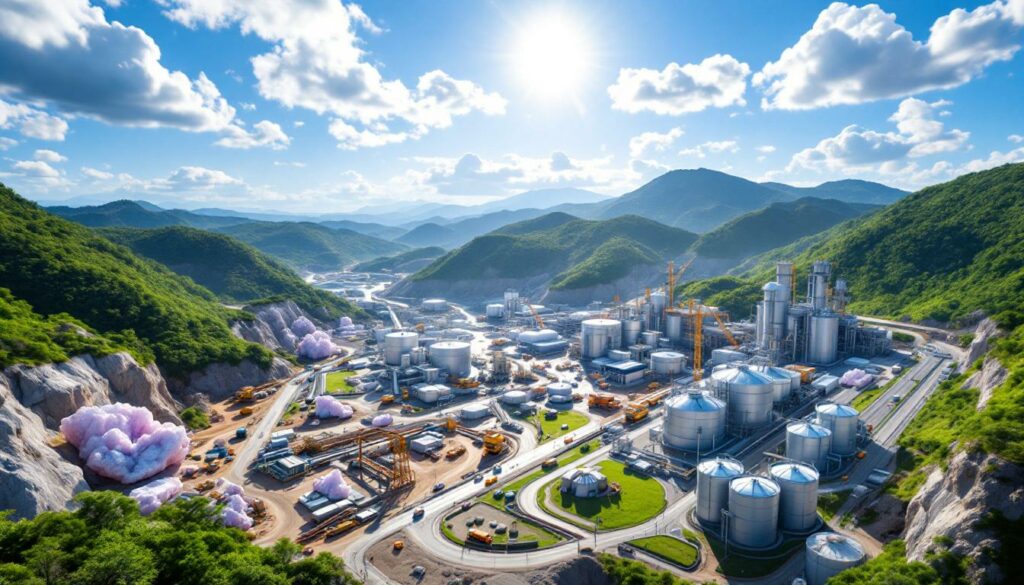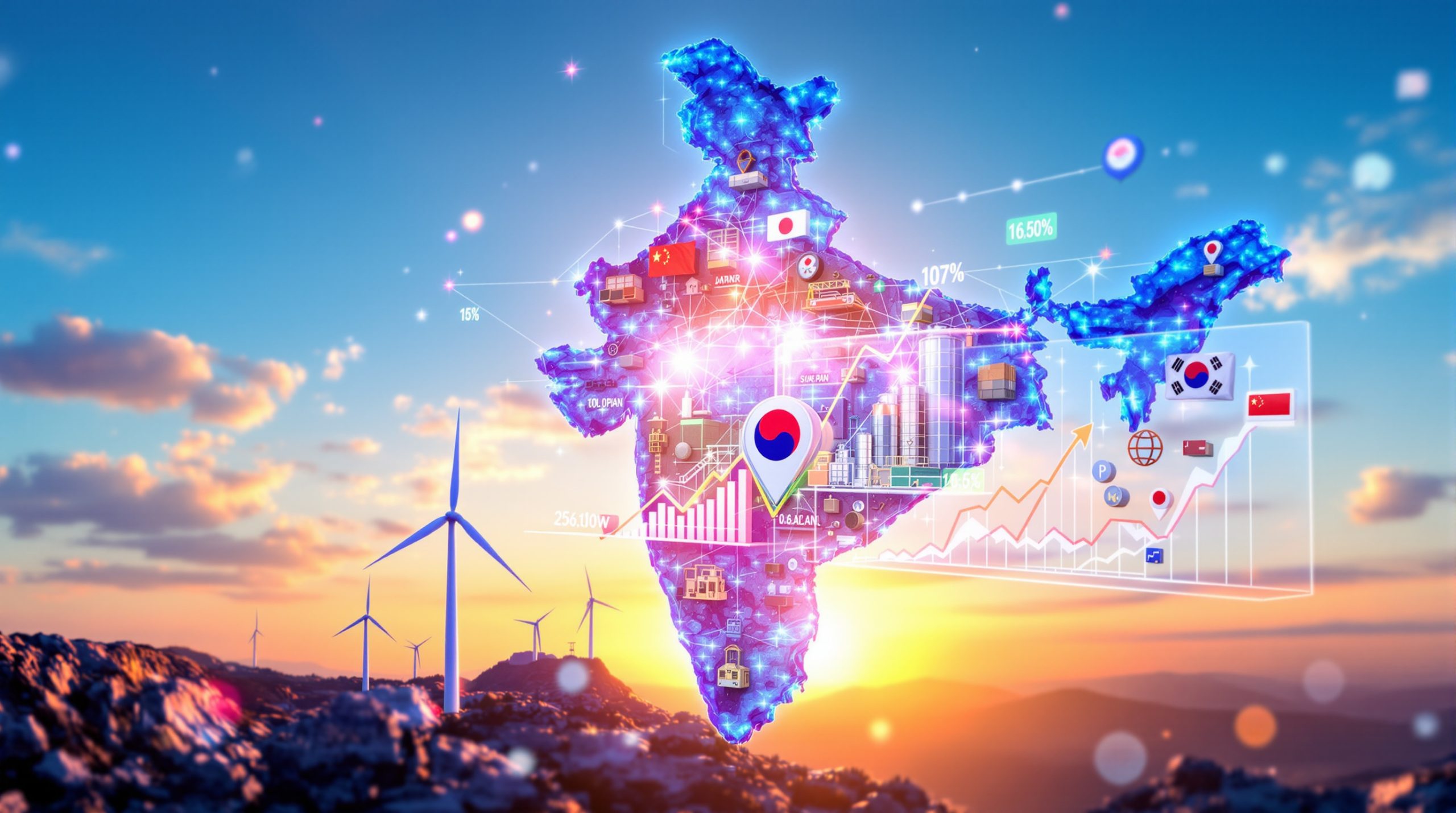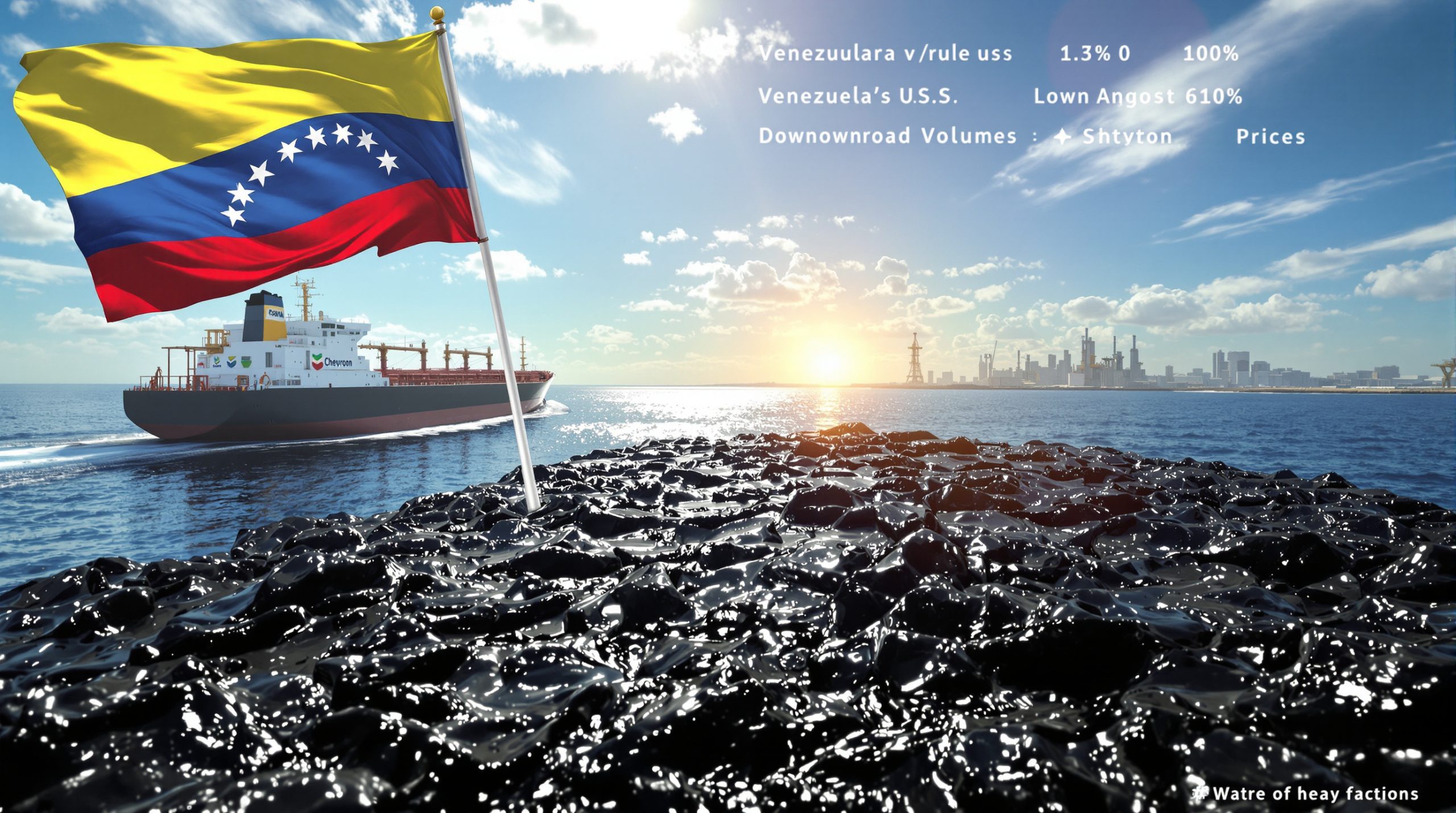The Paradoxical Growth Strategy in Brazil's Lithium Sector
Despite the current global downturn in lithium prices, Brazil's lithium industry is pursuing an ambitious expansion strategy that appears counterintuitive at first glance. Major producers across the country are implementing strategic growth plans, reflecting a profound confidence in long-term market fundamentals and Brazil's unique competitive advantages in the global lithium supply chain.
This bold approach isn't just optimistic speculation—it's a calculated strategy based on economies of scale, cost efficiency, and strategic positioning for an inevitable market recovery. With 25 lithium projects currently in various stages of development nationwide, Brazil is doubling down on its lithium future despite the challenging price environment.
"We need to grow now to take advantage of the positive lithium price scenario that will come someday," explains Vinicius Alvarenga, CEO of Companhia Brasileira de Lítio (CBL), articulating the industry-wide sentiment that today's investments will yield tomorrow's market leadership.
The strategy leverages Brazil's competitive advantages, including lower royalty rates compared to Australia lithium innovations, a well-qualified mining labor force, strong ESG credentials for "green lithium" production, and excellent domestic logistics infrastructure that reduces operational costs throughout the supply chain.
Which Companies Are Leading Brazil's Lithium Expansion?
Companhia Brasileira de Lítio (CBL): Doubling Capacity Through Automation
CBL, Brazil's oldest lithium producer operating since 1991, is spearheading an ambitious expansion that will double its mining capacity from 50,000 to 100,000 tonnes per year of spodumene concentrate. Simultaneously, the company is tripling its chemical production capacity from 2,000 to 6,000 tonnes per year of lithium carbonate equivalent (LCE), covering both battery and technical grades.
What makes this expansion particularly remarkable is CBL's implementation of automation technology that allows the company to maintain current staffing levels while doubling output. According to Alvarenga, this approach makes their brownfield expansion "the least capital-intensive refinery project in the market."
The implementation timeline spans approximately 24 months, pending regulatory approval, positioning CBL to complete its capacity expansion by mid-2027.
Sigma Lithium: Securing Major Development Financing
In a vote of confidence for Brazil's lithium future, Sigma Lithium has secured a binding commitment of 487 million Reais ($89 million) from the National Brazilian Bank for Economic and Social Development (BNDES). This financing will support Sigma's plans to nearly double its spodumene concentrate production from 270,000 to 520,000 tonnes per year.
Ligia Pinto, Sigma's Vice President, emphasizes that the company's strategy focuses on "reinvestment, not profit" to strengthen the "Lithium Valley" ecosystem in Minas Gerais state. With commissioning of the second plant expected by Q4 2025, Sigma is implementing cost-cutting measures to "resist producing amid falling prices" while preparing for future growth.
AMG Lithium: Vertical Integration and Supply Chain Optimization
AMG Lithium is pursuing perhaps the most ambitious vertical integration strategy among brazilian lithium producers. Currently operating the Mibra Mine in Minas Gerais to produce spodumene concentrate, AMG is planning a chemical converter plant in Brazil to produce technical-grade lithium hydroxide.
"We're planning technical chemical production in Brazil," explains Fabiano Costa, AMG's CEO. This strategic move aims to streamline the company's supply chain by sending chemicals directly to its German refinery instead of routing raw materials through China—a significant advantage in an increasingly geopolitically fragmented market.
AMG's long-term vision targets 100,000 tonnes per year of battery-grade lithium hydroxide production by 2030, sufficient to supply approximately 2.5 million electric vehicles annually.
| Company | Current Capacity | Expansion Target | Timeline |
|---|---|---|---|
| CBL | 50,000 tpy spodumene | 100,000 tpy spodumene | 24 months |
| Sigma Lithium | 270,000 tpy concentrate | 520,000 tpy concentrate | Q4 2025 |
| AMG Lithium | – | 100,000 tpy LCE | By 2030 |
What's Driving Expansion During a Price Downturn?
Cost Reduction Through Scale and Efficiency
The economic rationale behind Brazil's counter-cyclical lithium expansion centers on spreading fixed costs across larger production volumes. As Vinicius Alvarenga of CBL emphasizes, expansion "spreads fixed costs" to lower per-unit expenses, making operations more resilient against price volatility.
By implementing automation and process optimization, companies like CBL can limit increases in labor costs while significantly boosting output. This approach is particularly effective for brownfield expansions that leverage existing infrastructure, reducing capital expenditure compared to greenfield projects.
The current market downturn also creates what industry insiders describe as a "strategic investment window," with construction costs lower than during boom periods. Companies with strong financial backing can build capacity at reduced rates, positioning themselves competitively for the next upswing in lithium prices.
Strategic Positioning for Future Market Recovery
Despite short-term price pressures, Brazilian lithium producers maintain unwavering confidence in the medium to long-term market outlook. Industry leaders anticipate eventual price recovery as electric vehicle adoption continues to accelerate globally, driving sustained demand growth for battery materials.
This forward-looking perspective allows companies to make strategic investments that might appear counterintuitive in the current price environment. By focusing on becoming low-cost producers through operational efficiency and scale, Brazilian lithium companies are weathering market volatility while preparing for future opportunities.
AMG's European connection provides particular strategic market access as the continent develops its battery supply chain. With EU policymakers pushing for reduced dependence on Chinese materials, Brazil's "non-China" lithium sources offer potential premium positioning for Western automotive and battery manufacturers.
Leveraging Brazil's Competitive Advantages
Brazil offers several structural advantages that support its lithium sector expansion:
- Lower royalty rates compared to competing jurisdictions like Australia, improving profit margins
- Well-qualified labor force with extensive mining expertise and technical knowledge
- Strong ESG credentials for "green lithium" production, using predominantly hydroelectric power
- Excellent domestic logistics infrastructure reducing transportation costs
- Favorable geology for hard-rock lithium extraction in established mining regions
These competitive advantages create a foundation for sustainable cost leadership, allowing Brazilian producers to maintain viability even during challenging market conditions while positioning for strong profitability when prices recover.
What Challenges Must Brazil Overcome for Lithium Sector Growth?
Domestic Demand Development
Industry leaders consistently highlight the need for local lithium consumption to advance Brazil's position in the global supply chain. As Alvarenga notes, "domestic [lithium] consumption" is essential for supply-chain advancement beyond raw material extraction.
Government incentives for electric vehicle adoption and battery manufacturing would strengthen the domestic market, creating opportunities for higher-value processing within Brazil. However, the current focus remains primarily on export markets due to limited local demand for lithium products.
"Without domestic battery production, Brazil's lithium sector remains highly dependent on international market dynamics, limiting value capture within the national economy."
Financial and Regulatory Hurdles
Brazil's lithium sector faces significant financial challenges, with the cost of capital described as "very difficult" by Fabiano Costa of AMG. This high cost of financing places Brazilian projects at a disadvantage compared to international competitors with access to lower-interest funding.
The country's complex tax structure presents another major obstacle. Leandro Gobbo, Vice President of PLS Brazil, bluntly describes Brazil as a "tax mess" that requires comprehensive reform to improve competitiveness. Industry participants consistently call for "effective public policies to reduce operating costs" and provide long-term stability for investment decisions.
These challenges can significantly impact project economics, potentially delaying or deterring otherwise viable lithium developments despite the country's geological potential.
Vertical Integration Considerations
A nuanced debate exists among Brazilian producers about the optimal level of vertical integration for the country's lithium sector. While some companies pursue full integration from mining through chemical processing, CBL's CEO warns against an "obsession with verticalization," noting that both mining and conversion independently create value.
The industry recognizes the need for a balanced approach that leverages Brazil's strengths at different points in the supply chain. However, capital constraints limit full vertical integration without supportive financing mechanisms, particularly for smaller producers.
PLS Brazil's acquisition of Latin Resources demonstrates one approach to advancing integration through strategic partnerships and consolidation, potentially creating a model for future development of Brazil's lithium ecosystem.
How Does Brazil Compare in the Global Lithium Landscape?
Production Forecast and Growth Trajectory
Brazil's lithium sector is on a clear growth trajectory, with production expected to reach approximately 57,000 tonnes of LCE in 2025. Projections indicate a 6% compound annual growth rate (CAGR) will push output to 102,000 tonnes by 2035, significantly increasing Brazil's global market share.
| Metric | 2025 | 2035 (Projected) |
|---|---|---|
| Brazil LCE Production | 57,000 tonnes | 102,000 tonnes |
| Growth Rate | – | 6% CAGR |
With 25 lithium projects in various stages of development nationwide, the pipeline for future expansion is substantial. Atlas Lithium's Minas Gerais project stands as the most advanced next-phase mine according to Fastmarkets analysis, with several other significant developments progressing toward production decisions.
"Lithium Valley Brazil" Initiative
The regional development strategy centered in Vale do Jequitinhonha, Minas Gerais, known as "Lithium Valley Brazil," represents a coordinated effort to create a lithium production cluster with shared infrastructure and expertise. This approach aims to generate economies of scale while reducing development costs for individual projects.
Blake Hylands of Lithium Ionic describes Brazil as a "country of trust and expertise" for foreign investors, highlighting the growing international interest in the country's lithium potential. Ongoing efforts to streamline permitting processes and improve regulatory frameworks support this cluster development strategy.
The concentration of projects in Minas Gerais creates opportunities for shared knowledge, workforce development, and infrastructure that can benefit all participants in the regional lithium ecosystem.
ESG Advantages and the "Green Premium" Question
Brazilian producers emphasize their environmental and social responsibility credentials as a potential competitive advantage in increasingly ESG-conscious markets. Companies like Sigma Lithium have branded their production as "green lithium," highlighting renewable energy use and responsible operating practices.
Industry leaders advocate for market recognition of these ESG attributes through pricing premiums, but Leandro Gobbo notes that a "financial bonus for green production" is still needed for proper market valuation of sustainability efforts. Current market conditions don't adequately reward ESG performance in pricing, creating a disconnect between investment and returns.
As battery makers increasingly focus on supply chain sustainability, particularly for European and North American markets, Brazil's ESG credentials may translate into competitive advantages and preferential sourcing relationships, even without explicit price premiums.
What Is the Current State of Global Lithium Pricing?
Key Market Indicators
As of July 11, 2025, lithium prices have stabilized at levels significantly below their historical peaks, according to Fastmarkets data:
- Spodumene concentrate (min 6% Li₂O): $660-690 per tonne CIF China
- Lithium hydroxide monohydrate (battery grade): $7.70-8.30 per kg CIF China, Japan & Korea
- Lithium carbonate (battery grade): $7.90-8.60 per kg CIF China, Japan & Korea
These prices follow the significant declines from previous market peaks during 2023-2024, reflecting supply growth outpacing demand in the short term. The market outlook suggests continued pressure in the near term with potential recovery in the medium to long term as EV adoption accelerates globally.
Impact on Investment Decisions
Current price levels challenge project economics across the lithium industry, particularly for higher-cost producers and new developments. However, this environment creates opportunity for counter-cyclical investment by companies with strong balance sheets and long-term strategic vision.
Brazilian producers are focusing intensely on "operational efficiency" to maintain viability at current price levels. This emphasis on cost control and productivity improvement strengthens their competitive position regardless of future price movements.
Sigma Lithium's successful financing despite spodumene prices in the $660-690/t range demonstrates that strategic projects can still attract capital even in challenging market conditions, particularly when they offer scale, efficiency, or unique market positioning.
How Might Brazil's Lithium Sector Evolve?
Potential Scenarios for Vertical Integration
Brazil's lithium sector evolution will likely follow one of several development paths, depending on market conditions and policy support:
- Integrated Processing Expansion: Increased domestic processing capacity develops as battery manufacturing grows in Brazil or nearby South American markets
- Concentrate Export Focus: Continued emphasis on high-quality concentrate production for export markets, particularly if processing remains economically challenging
- Selective Value-Added Processing: Gradual development of chemical processing capabilities in specific market segments where Brazil has competitive advantages
- Strategic Partnership Model: Formation of joint ventures with international battery and automotive manufacturers seeking supply chain diversification
Alvarenga's observation that domestic battery manufacturing is key to vertical integration suggests that government policy on EV adoption and manufacturing incentives will significantly influence which scenario ultimately prevails.
Investment Climate Outlook
Despite current price challenges, international interest in Brazil's lithium resources continues to grow. Blake Hylands' characterization of Brazil as a "country of trust and expertise" reflects the increasing recognition of the country's mining capabilities and geological potential.
Continued improvement in regulatory frameworks and permitting processes will be essential to maintain this positive investment momentum. The industry continues to advocate for more supportive government policies, particularly regarding tax reform and financial incentives for advanced processing.
As strategic minerals gain importance in global supply chains, Brazil has the opportunity to attract increased investment, particularly from Western companies seeking alternatives to Chinese-dominated supply networks.
Supply Chain Resilience Considerations
Brazil's position outside China-dominated supply chains offers significant diversification benefits for battery and automotive manufacturers concerned about geopolitical risks. AMG's strategy to bypass China by connecting Brazilian production directly to European processing exemplifies this approach.
As governments and manufacturers increasingly prioritize supply chain security, Brazilian lithium may command a premium for non-Chinese supply. However, producers must maintain cost competitiveness to capitalize on this advantage while remaining viable against established producers in Australia and elsewhere.
The opportunity to serve Western markets seeking supply chain security creates a strategic opening for Brazilian producers, particularly those with downstream connections to battery manufacturing in Europe and North America.
FAQ: Brazilian Lithium Industry Expansion
Why are Brazilian lithium companies expanding when prices are falling?
Brazilian lithium producers are expanding despite price declines to achieve economies of scale, reduce per-unit production costs, and position themselves competitively for an anticipated market recovery. By investing counter-cyclically, they aim to build capacity at lower costs and be ready to capitalize when lithium demand strengthens with continued EV adoption globally.
As CBL's CEO Vinicius Alvarenga explains: "We need to grow now to take advantage of the positive lithium price scenario that will come someday." This strategic timing allows companies to spread fixed costs across larger production volumes while taking advantage of lower construction costs during market downturns.
What makes Brazil competitive in the global lithium market?
Brazil offers several competitive advantages including favorable geology for hard-rock lithium mining, lower royalty rates than competing jurisdictions like Australia, well-qualified labor, strong ESG credentials, and good domestic logistics infrastructure. These factors position Brazil as a potentially low-cost, environmentally responsible lithium producer.
The country's lithium production primarily uses hydroelectric power, supporting claims of "green lithium" production with lower carbon intensity than many competing sources. Additionally, Brazil's established mining industry provides expertise and infrastructure that reduce development risks for new projects.
What is the "Lithium Valley Brazil" initiative?
"Lithium Valley Brazil" is a regional development strategy centered in Vale do Jequitinhonha in Minas Gerais state, aimed at creating a lithium production cluster with shared infrastructure and expertise. The initiative seeks to improve regulatory frameworks, streamline permitting processes, and attract investment to develop Brazil's lithium resources.
Companies like Sigma Lithium are central to this vision, with VP Ligia Pinto emphasizing a strategy of "reinvestment, not profit" to strengthen the regional ecosystem. This cluster approach aims to generate collective benefits through shared knowledge, infrastructure, and workforce development.
What are the main challenges for Brazil's lithium industry?
Key challenges include limited domestic demand for lithium products, high capital costs, complex tax structures, regulatory hurdles, and the need for more supportive government policies. Industry leaders advocate for tax reform and incentives to develop local battery and EV manufacturing to strengthen the domestic market.
Leandro Gobbo of PLS Brazil bluntly describes Brazil as a "tax mess" that requires comprehensive reform to improve competitiveness. Meanwhile, the high cost of capital described as "very difficult" by AMG's Fabiano Costa places Brazilian projects at a disadvantage compared to international competitors with access to lower-interest funding.
How significant will Brazil become in global lithium supply?
Brazil's lithium production is expected to grow from approximately 57,000 tonnes LCE in 2025 to 102,000 tonnes by 2035, representing a 6% compound annual growth rate. With 25 projects in development and companies expanding existing operations, Brazil is positioned to become an increasingly important player in global lithium
Want to Invest in The Next Major Mineral Discovery?
Stay ahead of the market with Discovery Alert's proprietary Discovery IQ model, which instantly alerts investors to significant ASX mineral discoveries and transformative opportunities in the lithium sector and beyond. Explore why major mineral discoveries can lead to substantial returns by visiting the dedicated discoveries page and begin your 30-day free trial today.




